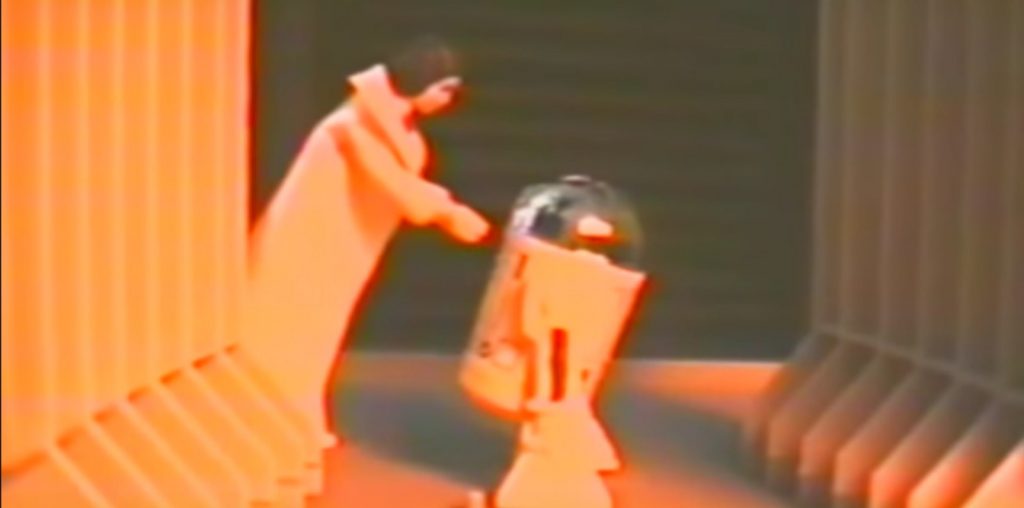
When Arthur Miller croaked on February 11, all of his obituaries cited the obvious: his contributions to the American theater, his social activism, his tumultuous marriage to Marilyn Monroe, etc. Strangely, no obituary bothered to mention Miller’s contribution the world of films that are only available on bootleg videos. Admittedly, it is a small contribution in regard to quantity. But it is an important contribution in regard to quality.
The film in question is the 1951 adaptation of Miller’s masterpiece, “Death of a Salesman.” It is a production with a remarkably troubled history, but unlike many controversy-inducing flicks it is also a work of great dramatic power and searing emotionalism. I would also add it is the single finest interpretation of the Miller text ever made.
“Death of a Salesman” was the first of a series of films which independent producer Stanley Kramer was signed to create for Columbia Pictures. From the beginning, there were problems: Kramer’s contract with Columbia prohibited his features from going over $980,000 in their budget. The tight financial restrictions limited the scope of what Kramer could create, so he opted to limit himself to tightly-crafted works which did not require opulent sets or big casts. Indeed, many critics would grouse “Death of a Salesman” looked cheaply made and they laid the blame on director Laszlo Benedek, although he was not at fault.
Choosing “Death of a Salesman” for a film adaptation was a no-brainer, given its importance and commercial success as a Broadway play. Kramer brought three of the stars of the original Broadway cast to the film: Mildred Dunnock as the long-suffering mother Linda Loman and Kevin McCarthy and Cameron Mitchell as her less-than-stellar sons. But for the main role of Willy Loman, Kramer did not call on Lee J. Cobb, who originated the role on Broadway. Why Cobb was passed over is not certain, nor is it clear why Fredric March was signed to play Willy Loman. March was no slouch as an actor, having won two Academy Awards during his career, but he was not a box office star and the role of the pathetic Willy Loman was radically different from anything he previously played.
But this unlikely casting was a stroke of genius. March’s Willy Loman was a brilliant achievement, capturing the heartbreaking nuances of his character’s gradual loss of self-respect amid endless professional and personal failures. During the course of the film, the false bluster and goodwill of his salesman’s bravado crumbles away to reveal a man whose tragic inability to understand people speeds him away from emotional stability. March’s Willy Loman maintains a sense of physical dignity (compared to a later filmed version with Dustin Hoffman playing the role in blatantly ridiculous old-man make-up), which makes his nervous breakdown all the more harrowing as occurs from within — his eyes literally lose focus on what is real although his demeanor is still salesman-sharp. It is not a grand physical collapse, which bulky Brian Dennehy gave in his 1999 Broadway and made-for-TV interpretation, but rather a case of internal decay. March’s acting gives a tragic dissection to a self-deluded and self-important man who is abandoned by a world which he never fully understood and which never genuinely accepted him.
(The intensity of the character was not lost on March, who used his free time between takes to slip off to a neighboring sound stage on the Columbia lot to watch the Three Stooges shooting their two-reel slapstick. March was a regular visitor to the Stooges’ sets and became friends with the trio.)
Miller would bitterly sneer in later years that March’s performance gave the impression that Willy Loman was simply crazy, but that comment might have been rooted in the fact Miller had no involvement in the film’s production and seemed unhappy that he was not consulted in the casting or any other aspect. Another writer is credited with the screenplay, but the film version is virtually slavish to the Miller text, and all of the classic monologues are here verbatim.
Although Miller was not connected to the film, the association of his name created difficulties. By the time the film was getting ready for release, Miller was under a cloud of Communist suspicions by the House Un-American Activities Committee. Many McCarthyist agitators saw “Death of a Salesman” as an affront to American capitalist values, and a worried Columbia Pictures rushed a one-reel short film called “Life of a Salesman” into release which hailed the capitalist system while berating the character of Willy Loman for not understanding what a wonderful country he lived in. The foolish flag-waving appeased no one, and at the film’s New York premiere right-wing zealots picketed the theater with placards denouncing Miller’s alleged left-wing ties.
Despite strong reviews and a healthy number of Oscar nominations (including nods for March, Dunnock and McCarthy), “Death of a Salesman” was a commercial failure. Columbia’s president Harry Cohn hated the film and was furious at the negative publicity and poor box office receipts. Cohn never enjoyed an easy working relationship with producer Stanley Kramer during the latter’s Columbia contract, which saw only two successful films (“The Wild One” and “The Caine Mutiny”) and seven critically-acclaimed flops (including “A Member of the Wedding” and “The Four-Poster”); the “Death of a Salesman” flop got their relationship off on the wrong foot and it never recovered.
So what happened to “Death of a Salesman”? Apparently it played regularly on television during the late 1950s and the 1960s, but by the 1970s it disappeared from sight. Reportedly, Arthur Miller gained control to the rights of the film and has kept it out of circulation. The film is available for non-theatrical screenings and it has turned up occasionally on television networks outside of the United States, yet it has been conspicuously absent from American viewing for decades.
But (cue the applause sign), “Death of a Salesman” can be found on bootleg video. And the good news is, it is a great-looking print (taken from a 16mm copy). There is at least one online company specializing in public domain titles which is selling this title, though I genuinely believe (knowing that company as I do) that they are unaware it is not PD and they have no idea of its bootleg status. Other copies are floating about via private collectors and it is not difficult to track down.
“Death of Salesman” is a great film that deserves to be seen and appreciated today. Perhaps now that Miller has passed away, his estate can be coaxed to allowing the film into commercial home video release. But until that day comes around, it maintains the distinction of being one of the very best movies floating around the Bootleg Files.
____________________________________________________________
IMPORTANT NOTICE: The unauthorized duplication and distribution of copyright-protected material is not widely appreciated by the entertainment industry, and on occasion law enforcement personnel help boost their arrest quotas by collaring cheery cinephiles engaged in such activities. So if you are going to copy and sell bootleg videos, a word to the wise: don’t get caught. The purchase and ownership of bootleg videos, however, is perfectly legal and we think that’s just peachy! This column was brought to you by Phil Hall, a contributing editor at Film Threat and the man who knows where to get the good stuff…on video, that is.
Discuss The Bootleg Files in Back Talk>>>


arthur miller was also a scumbag father—who shoved his down’s syndrome kid away somewhere, and never bothered with him.
http://www.dailymail.co.uk/femail/article-478932/Arthur-Miller-son-hid-away-40-years.html
I can relate, at least, to commi dads who ignore their kid—cause my dead kinda-commi dad ignored me.